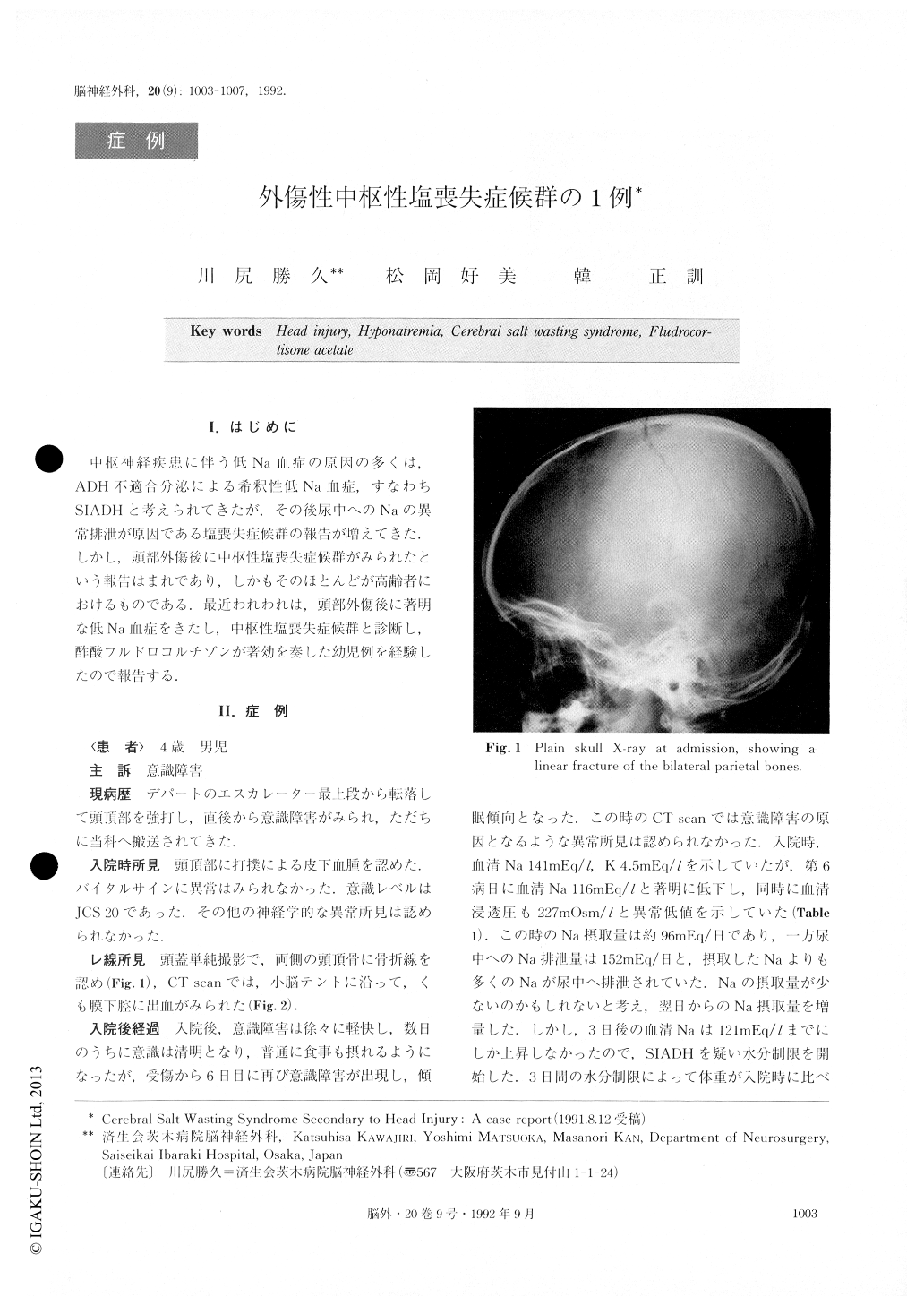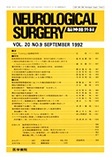Japanese
English
- 有料閲覧
- Abstract 文献概要
- 1ページ目 Look Inside
I.はじめに
中枢神経疾患に伴う低Na血症の原因の多くは,ADH不適合分泌による希釈性低Na血症,すなわちSIADHと考えられてきたが,その後尿中へのNaの異常排泄が原因である塩喪失症候群の報告が増えてきた.しかし,頭部外傷後に中枢性塩喪失症候群がみられたという報告はまれであり,しかもそのほとんどが高齢者におけるものである.最近われわれは,頭部外傷後に著明な低Na血症をきたし,中枢牲塩喪失症候群と診断し,酢酸フルドロコルチゾンが著効を奏した幼児例を経験したので報告する.
A case of cerebral salt wasting syndrome secondary to head injury is reported here. A 4-year-old boy was admit-ted to our hospital with head injury. Neurological ex-amination revealed no abnormal findings other than con-sciousness disturbance. Plain skull X-ray demonstrated a linear fracture of the bilateral parietal bones, and CT scan demonstrated suliarachnoid hemorrhage of the ten-torium of the cerebellum. He gradually improved, but on the 6 th day deterioration of consciousness developed. At that time CT scan demonstrated no abnormal findings. Biochemical analysis showed hyponittremia (116mEq/1L) with increased natriuresis. Although a high dose of NaCl was supplied, serum sodium levels did not normalize. So we suspected that SIADH might be causing the hypona-tremia, and water restriction was started. He lost 1 kg in body weight over 3 days, but serum sodium levels re-mained low (118mEq/L) with increased natriurcsis. We found that the hyponatremia was caused by cerebral salt wasting syndrome, so we treated the patient with fludrocor-tisone acetate. Consciousness disturbance improved two days after the medication with fludrocortisone acetate, and serum sodium levels became normal (137mEq/L) on the 27 th day. The administration of fludrocortisone ace-tate was able to be stopped two months after admission,and then the patient was discharged without any neuro logical deficits. We discussed in detail the diagnosis and the treatment of cerebral salt wasting syndrome.

Copyright © 1992, Igaku-Shoin Ltd. All rights reserved.


